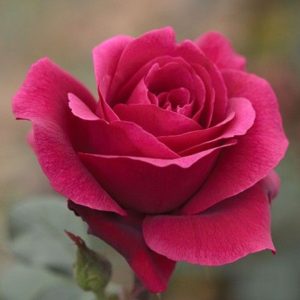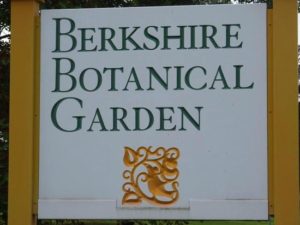What’s New with Old Roses
By Thomas Christopher
June is the season for roses, but most particularly for heritage or “heirloom” roses. These garden antiques offer not only a sense of history – many have bloomed unchanged since the days of the pioneers – but also special kinds of beauty and wonderful fragrances. True, many heirloom roses bloom only once a summer, typically in June, but in the three or four weeks when they are flowering, they bear as many blossoms as the average Hybrid Tea does over the whole growing season. Heirloom roses are generous plants, but they are also tough. Many of the heirloom roses are extraordinarily hardy, easily withstanding both frigid winters and hot, drought-prone summers.
I know a lot about these roses’ past – I once wrote a book on the subject, In Search of Lost Roses – but for information about new developments, I sought out Stephen Scanniello. Stephen is the curator of roses at the New York Botanical Garden and the rosarian at Elizabeth Park in Hartford, Connecticut, as well as president of the Heritage Roses Foundation. To speak with him, I joined him recently at the new Heritage Rose Garden he has helped to install in Elizabeth Park in Hartford.
This is big news for rose admirers in the northeastern states. Elizabeth Park’s rose garden, which includes some 15,000 bushes and climbers, has been a destination for flower lovers for more than 100 years, but the Heritage Rose Garden, which opened on June 6th, takes it to a new level: it is the only such collection between New York City and the Canadian border. Composed of 70 bushes of 56 different types, it is a living chronicle of rose history from the Middle Ages until just before the rise of modern hybrid tea roses in the late 19th and early 20th centuries.
Antiques roses come in a variety of colors (what rosarians call classes). Of these, Stephen recommended as particularly suited to the northeastern states the Alba roses, the Centifolia roses, the Gallica roses, and the Damask roses. Each type has its own distinct character: the Albas and Centifolias tend to bear big and many-petaled, elaborate blossoms; the Gallicas have smaller flattened blossoms like architectural rosettes, and the Damask roses are saucer-shaped, typically with many petals. The colors of all of these heritage roses tend to be softer than those of modern hybrids, trending toward pinks and whites with some true reds among the Gallicas. The perfumes are a treat, especially among the Damasks which are particularly intensely scented.
You’ll find a good assortment of heritage roses available on-line from High Country Roses (http://www.highcountryroses.com), a nursery based in Denver, Colorado. Heirloom Roses (http://www.heirloomroses.com/) a nursery located in St. Paul, Oregon, has a somewhat smaller, but still excellent, selection. Both nurseries grow their roses from cuttings, rather than grafting them as most growers of modern roses do. Roses grown from cuttings, “own-root roses,” may be slower to establish themselves after transplanting than grafted roses, but they are far more durable. Because own-root roses are both roots and top-growth of a single type of plant, if they are killed back by a hard winter or hungry deer, the shoots that re-emerge from the roots will be true to the desirable type. In similar circumstances, a grafted rose will commonly re-emerge as shoots of the rootstock, the vigorous but nondescript rose onto which the desirable, ornamental rose was grafted.
Stephen Scanniello says that he has been seeing a resurgence of interest in heritage roses. “People are getting tired of ‘Knockout,’ he explains. Take a trip to Elizabeth Park this June and you too will be a convert to an older style of floral beauty.
Thomas Christopher is the co-author of “Garden Revolution” (Timber Press, 2016) and is a volunteer at Berkshire Botanical Garden. berkshirebotanical.org
Be-a-Better-Gardener is a community service of Berkshire Botanical Garden, one of the nation’s oldest botanical gardens in Stockbridge, MA. Its mission to provide knowledge of gardening and the environment through 25 display gardens and a diverse range of classes informs and inspires thousands of students and visitors on horticultural topics every year. Thomas Christopher is the co-author of Garden Revolution (Timber press, 2016) and is a volunteer at Berkshire Botanical Garden. berkshirebotanical.org.




